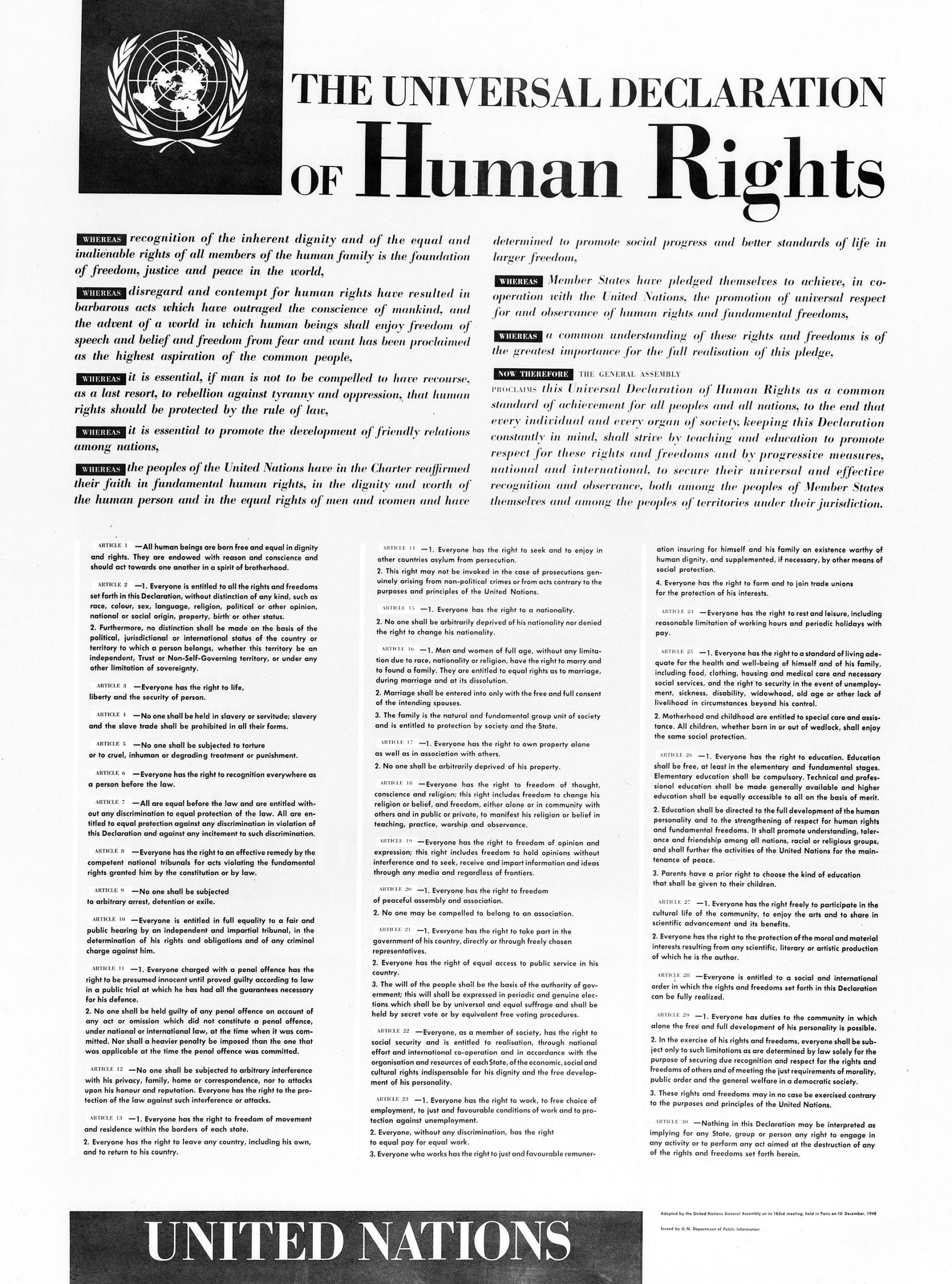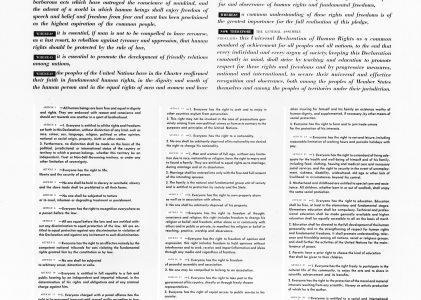分享到......
I. Reasons for Choosing the Topic
The Universal Declaration of Human Rights (hereinafter referred to as the Declaration or UDHR), which was promulgated in the post–World War II period, was an epoch-making worldwide and historic document.
The Declaration embodied the trends of maintaining peace and respecting democracy after the subsidence of World War II. It also built the foundation of the human rights spirits and purposes that are worldwide accepted and applied and constituted the human rights standards with a cornerstone significance.
Owing to the word “World” in the title of the Declaration, it was inevitable that countries with various ideologies and historical contexts will have conflicts on account of their different definitions of “human rights” in the process of the compilation of the Declaration.
Whereas, such phenomenon still reflected from the side the determination of historical figures at that time to protect the rights of the people of the world from being violated or ignored, and their much firmer faith in promoting the coordinated progress and development of humans after suffering the trauma of the war.
Therefore, the debates and diplomatic activities that appeared in the compilation of the UDHR are the crystals of various ideologies, which composed the priceless treasure of mankind.
II. Research Review
i. Historical Background
Existing research generally believes that the Declaration was born after the disaster brought about by World War II. World War II made humans realize the significance and urgency of human rights protection. At the same time, the establishment of the United Nations and the formulation of the United Nations Charter also provided historical background for the birth of the Declaration.
ii. Normative Foundations of the Declaration
The opinions of existing research vary on the normative foundations of the Declaration. According to some studies, it was based on the Atlantic Charter signed on August 14, 1941, because both the Declaration and the spirit of the United Nations embodied the basic human rights principles and spirit it stipulated.
iii. Legal Traditions Relevant to the Declaration
In considering the first legal document with recognition and protection of human rights, some studies suggest it can be dated back to Magna Carta in 1215. These studies believe that Magna Carta has become the institutional evidence, support, and guardian of human freedom and rights after intense debates and compromises at the time of its formulation plus the tempering and examination of numerous historic events and political turmoil after its formulation.
In addition, most studies also believe that the Declaration of Independence in the US, the Bill of Rights in the UK, and the Declaration of the Rights of Man and of the Citizen in France also apply the human rights ideology of the natural law school to specific legal practice. The traditional pursuit of freedom and equality in these Western countries is considered to have played a great role in the drafting of the Declaration.
There are also studies that suggest other legal traditions like Geneva Conventions and Hague Conventions should also be considered, though they played little role in preventing inhumane warfare in World War I.
iv. General timeline
- 1946
- 10 January — After the first session of the UN General Assembly, the representative of Panama submitted a proposal on basic human rights again, requesting it be officially incorporated into the agenda of the General Assembly.
- 16 February — The UN ECOSOC established the Commission on Human Rights.
- 31 October — The General Assembly accepted the proposal from the representative of Panama.
- 1947
- 27 January – 10 February — First Meeting of the Commission on Human Rights, Lake Success, New York. A general discussion was held on the drafting of the “Universal Charter of Human Rights”.
- After the First Meeting of the Commission on Human Rights, Drafting Committee was established, consisting of Eleanor Roosevelt, representative of the United States, Pengchun Zhang, representative of China, and Charles Mark, representative of Lebanon. As the three members of the group came from countries with various ideologies and traditions, their ideas and interests were very different from each other, leading to the drafting work being progressed too slowly.
- Later, during the second session of the UN ECOSOC, the representative of the Soviet Union asked to expand the Drafting Committee, which was then expanded to include representatives from the United States, China, Lebanon, the Soviet Union, Britain, France, Australia, and Chile.
- 2 December – 17 December — Second Session of the Commission on Human Rights, Geneva.
- 1948
- 24 May – 18 June — Third Session of the Commission on Human Rights, Lake Success, New York. The Commission adopted a draft Declaration and transmitted it to the Economic and Social Council.
- 26 August — Economic and Social Council transmitted the draft to the General Assembly.
- 21 September — Third Session of the United Nations General Assembly began.
- 30 September – 7 December — Third Committee of General Assembly spent 81 meetings considering the Declaration. 168 resolutions for amendments to the draft were submitted and considered.
- 1–4 December — Sub-committee of Third Committee was charged with cross-checking 5 official language versions.
- 10 December — Universal Declaration of Human Rights was adopted by the United Nations General Assembly
III. Outline of Thesis
FOR THE CONSENSUS ON HUMAN RIGHTS: THE DEBATES AND DIPLOMACY IN THE DRAFTING OF UNIVERSAL DECLARATION OF HUMAN RIGHTS
I. Backgrounds (The Paradox Between the Western Culture and Non-western Culture)
II. General Timeline
III. The Origin of the Human Rights
IV. *The Joint of Rights and Obligations
V. Significance
VI. Revelation
IV. Fundamental Materials
- [1]. Text of The Universal Declaration of Human Rights(https://www.un.org/en/about-us/universal-declaration-of-human-rights)
- [2]. Official document of the UN, A/RES/217(III)
- [3]. Mary Ann, A world made new : Eleanor Roosevelt and the Universal Declaration of Human Rights
- [4]. Johannes Morsink, The Universal Declaration of Human Rights: Origins, Drafting, and Intent
- [5]. Susan Muaddi Darraj, The Universal Declaration of Human Rights (Milestones in Modern World History)
- [6]. Robin Ramcharan, Bertrand Ramcharan, Asia and the Drafting of the Universal Declaration of Human Rights
- [7]. Hans Ingvar Roth, P. C. Chang and the Universal Declaration of Human Rights
本文由 汤镇玮 采用 知识共享 署名-非商业性使用-相同方式共享 4.0 国际 许可协议 进行许可。This work by Zhenwei Tang is licensed under a Creative Commons Attribution-NonCommercial-ShareAlike 4.0 International License.


